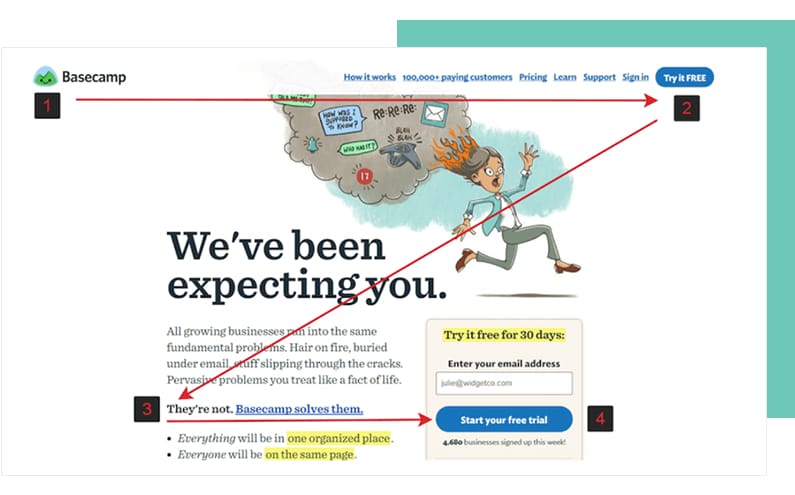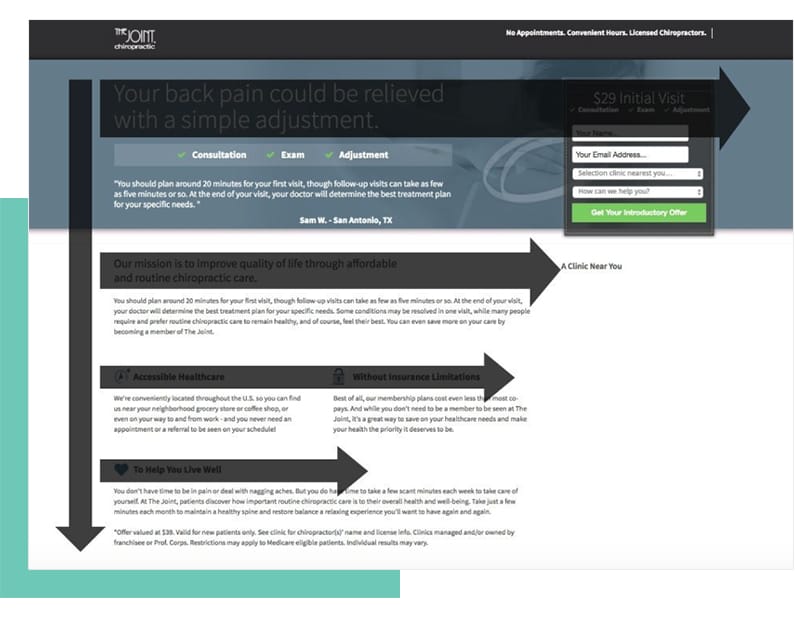When writing copy or content, the goal is to keep your readers’ eyes moving to the next line.
What if I said that you don’t have to be able to read customers’ minds to influence their reading patterns? What if I also told you your copy or content can do that all by itself? And it’s a fun concept: having some say as to where customers physically look and go next when they’re reading.
Poets have been doing this since ancient times, except back then, not many people knew how to read the way that those of us in industrialized countries do today.
For that reason, much of the poetry emerging from that period was sung or recited. This meant that the content creators of old had some say in controlling the rate of breathing in their readers, as they could choose to make a line of verse short or long.
By a similar token, since technology has changed the way we consume media and information, many people read web content to get information. Just like the ancients could control the rate of listeners’ breathing, you have the opportunity to influence how your readers read.
But how exactly do you do that? How can you physically control where prospects’ and customers’ eyes go when they read? The truth is: you can’t. The best you can do is try to guide readers using specific reading patterns that the eyes follow.
via Tenor
Z & F-shaped Reading Patterns
As it turns out, the reading patterns of today’s prospects and customers have evolved to resemble the shapes of specific letters. While each person has their own reading pattern, researchers have discovered that most individuals either read in a “Z” or “F” pattern.
In Z-shaped reading patterns, the prospect’s or customer’s eyes move in a Z-formation. Incorporating this fact with how you write copy is usually helpful when people scan and skim your website for anything that might interest them. They are looking for the gist of what you’re saying.
Companies that have successfully used the Z-shaped pattern include Basecamp, a software that streamlines remote work. They employ a Z-shaped pattern on their homepage.
Source: Medium
As you can see from this screenshot of the Basecamp homepage, there are a few places where you want to emphasize the most important information: the beginning and the end. Readers may catch a word or two when skimming the content, but by and large, people are most likely to absorb information at the top and bottom of the page.
What you can do about this is pack enough value to entice readers at the start of your copy, following it with sufficient content to keep them satisfied by the end.
This makes the Z-shaped pattern ideal for landing pages.
On the other hand, in F-shaped patterns, the eyes of your prospect or customer read the upper portion of your content, moving down until they are just skimming by the time they reach the bottom. For an example of this pattern in action, I point you in The Joint Chiropractic’s direction.
Source: Instapage
The Joint Chiropractic is a care provider focusing on affordability in chiropractic needs. Here, you can see a clear difference between the Z-shapes and F-shapes. Whereas readers using the Z-shape tend to gloss over content, preferring the start and finish of what you say, the F-shape reader is more thorough.
You can use this difference to your advantage when presenting certain types of content.
Z-shapes for when the contents of a page can afford to be glossed-over, F-shapes for where the reader needs to pay closer attention.
Readers’ eyes are controlled by their brains–by their psychology. You can also shape that to an extent. How? Read on…
Psychological Principles to Market By
What I mean here is that you can employ psychological concepts of persuasion to try to steer where your prospect or customer will read next.
When it comes to what’s happening in your mind while you’re being influenced, there’s no greater expert than Robert B. Cialdini. In his book, Influence: the Psychology of Persuasion, he lays out a set of six psychological principles that can be used to get people to do what you want.
Of note here are two of those six principles–put in the simplest terms:
To explain it in more detail, the Principle of Consensus works when people don’t know what to do, so in order to make it easier for the brain to make a decision, you copy what everybody else is doing.
An example of the Principle of Consensus working well would be the testimonials brands use on their websites and landing pages. The reason why you put them in there is to strengthen your argument that your business is the superior choice over competitors.
The main takeaway here is that when creating landing pages for low-information prospects, create content with the Z-shape reading pattern in mind. This is also because they’re not as interested in the process–as it were–as they are the end-result. This gives the reader a reason to skip most of your content.
The Principle of Scarcity works well with the Principle of Consensus because the F-shaped reading pattern would require more content. And according to that principle, readers wouldn’t be interested so much in what you say you have to offer as to what others say. In other words, less is more.
Brands that do scarcity well include Dunkin’ Donuts. They use scarcity through the seasonal offer of pumpkin-spiced coffee during the fall. It works because they only offer it during the fall, which increases attractiveness to the consumer because it is such a scarce commodity.
While you can’t control what the reader sees or reads first, there are ways to increase the chances they see or read what you want them to in your desired sequence.
Creating content for specific types of website visitors and/or utilizing the psychology of scarcity or consensus can be helpful in highlighting what you want to be seen first.
And in marketing, visibility is everything.
What strategy is the most successful for your business? Tell us in the chat below.







